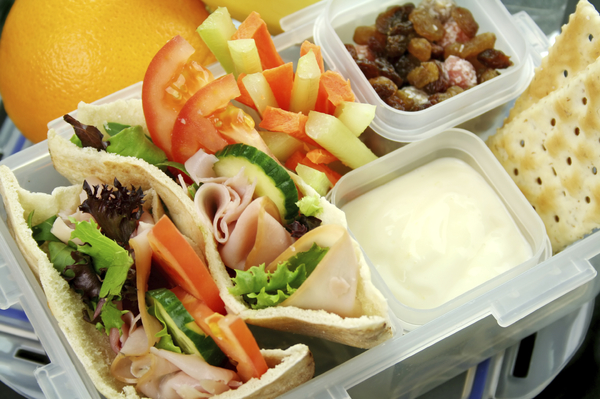By Hollie Harris
The Cancer Council will today reveal health shocks found in the average lunchbox, with parents preparing to pack the first of about 200 lunches per child over the year from today.
Research shows many lunchboxes contain the recommended serves of fruit but can be alarmingly low on vegetables and high on hidden sugar and salt.
Cancer Council Queensland spokesperson Katie Clift said parents may be packing foods that appear healthy, and would be shocked to discover high levels of saturated fat, sugar and salt.
“Balancing the weekday lunchbox is a difficult task – we understand the time, financial, emotional and practical pressures Queensland parents face,” Ms Clift said.
“Too often lunchbox snacks are promoted as healthy choices, but contain high levels of saturated fat, sugar and salt, which can negatively impact children’s health and wellbeing.
“The majority of lunchbox items should be wholefoods from the five recommended food groups.
“Parents should choose fresh, whole foods such as fruit, vegetables, legumes, lean meats, eggs, poultry, legumes and beans, wholegrains high in fibre and low fat dairy products including plain milk, yoghurt and cheese for school lunches.
“Processed and packaged foods should be avoided as much as possible.”
Cancer Council Queensland has released a go-to guide for parents shopping for school lunches.
“When time is a factor and packaged food products need to be used, it’s important for parents to read food labels and look for the Health Star Rating on packaged products,” Ms Clift said.
“Parents should check the kilojoule content on packaged food products, keeping in mind that one serve of a ‘discretionary food item’ is 600kj.
“Using the 100g column on the nutritional panel is the best way to compare products at the supermarket.
“It is also important to read the ingredients list and take note of the sugar, saturated fat and sodium (salt) levels.
“Choose breads and cereals with 3g or more fibre per serve, aim for the lowest saturated fat (less than 3g per 100g is best) and generally choose foods with less than 10g per 100g of fat.
“Try to avoid large amounts of added sugars. Aim for less than 15g of sugar per 100g and check that sugar is not listed high on the ingredient list.
“A balanced lunchbox should contain one serve of lean protein, wholegrains (such as wholemeal bread, wraps, rice and muesli), one or two pieces of fruit, vegetables, low-fat dairy and plenty of water to keep kids hydrated.”
The Australian Dietary Guidelines recommend four and a half serves of vegetables daily for children aged four to eight, and five serves a day for children aged nine to 11.







